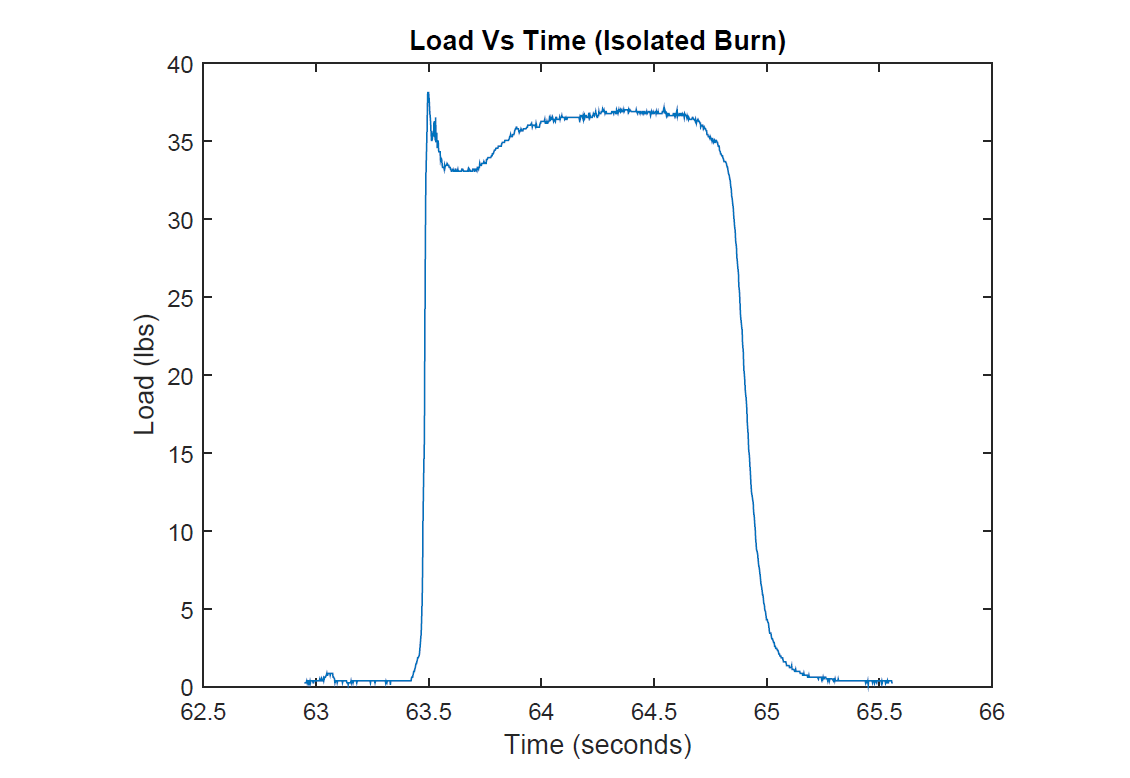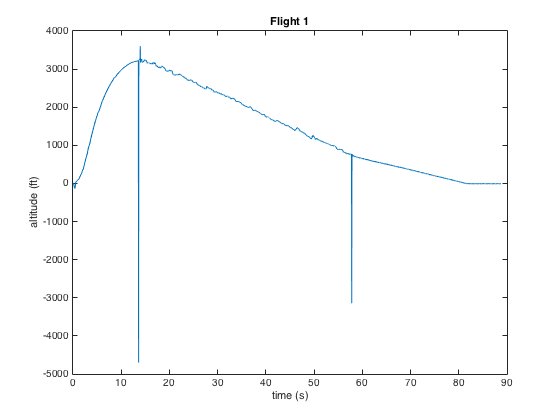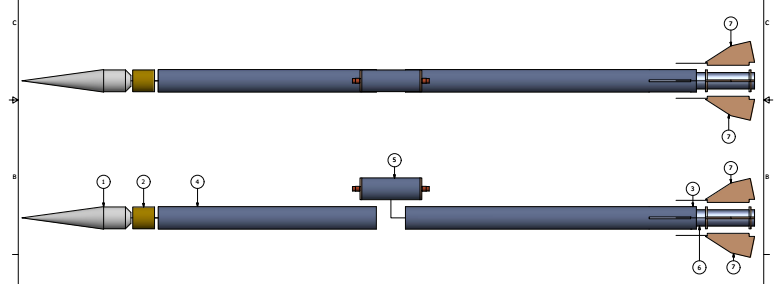Analysis Preformed
Process
The first thing the group did to ensure a successful rocket was stability calculations. The team generated a concept for the rocket where the center of gravity and center of pressure were calculated. For the rocket to be stable in flight, the center of gravity must be above the center of pressure by one or two outer diameters of the rocket (in our case be 3 to 6 in above the center of pressure). The team used Autodesk Inventor and OpenRocket, open source rocket simulator, to accurately determine the center of gravity and center of pressure of the rocket for various motor sized to make sure the rocket will still fly safely.
Another part of a successful rocket is the motor and the thrust it outputs. The group researched various propellant compositions and settled on ammonium perchlorate and aluminum powder as the fuel and oxidizer. From there, the team generated various propellant mixtures to get a propellant that is easy to mix as well as gives the desired thrust. The thrust is determined experimentally through the use of a load cell and a test stand which the motor is mounted on. The project team engineered and built the test stand.
Lastly, after the launch, the project team planned to take the data collected through the accelerometer and flight computer data to generate the thrust curve for the motor while in flight and compare to the static test fire of the motors to validate the thrust curve and see if there is any discrepancy between static firing and dynamic firing of the motor and gain valuable data and knowledge of using experimental motors in high powered rocketry.
Results
Various propellant mixtures were tested in 38 mm diameter motor casings. Preliminary tests showed proof of concept while subsequent tests collected thrust data. The generated thrust curves showed that the propellant mixture was within the Level 2 motor classification. A final mixture of 80% solids by mass (65% Ammonium Perchlorate, 15% Aluminum) and 20% by mass liquid (containing epoxy, and other additives). The team demonstrated that experimental propellant can be mixed to generate the requisite thrust to power the rocket.

| Test Stand Testing | Average Thrust (lb) |
|---|---|
| 4/18/17 3rd test | 25.6 |
| 4/18/17 2nd test | 28.8 |
| 4/17/17 test | 22.8 |
| 4/22/17 test | 23.9 |
Safety concerns that arose during final static testing prevented the use of experimental propellant in the launch. The team successfully launched and recovered the rocket twice. It was not possible to directly gather acceleration data from the rocket due to a malfunctioning accelerometer. This data can be recovered at a lower resolution from the flight computer. The project team successfully showed the use of the rocket as a test platform for the future development of experimental rocket propellant.

Note: First spike is seperation charge, second spike is parachute release.

